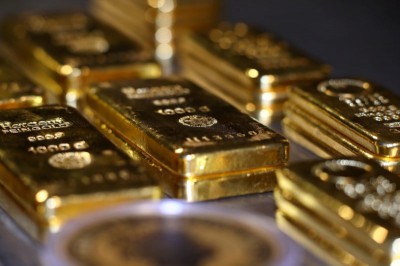 © Reuters XAU/USD +0.00% Add to/Remove from Watchlist Add to Watchlist Add Position
© Reuters XAU/USD +0.00% Add to/Remove from Watchlist Add to Watchlist Add Position Position added successfully to:
Position added successfully to:
Investing.com - Gold prices moved little in Asian trade on Friday, sticking above key levels as markets awaited a potentially softer U.S. nonfarm payrolls reading, which comes just days before a Federal Reserve meeting.
The yellow metal had raced to record highs at the beginning of the week, helped by a mix of rate cut bets and safe haven demand.
But it had lost the record highs as abruptly as it had reached them, as traders locked in profits amid some uncertainty over U.S. monetary policy.
Spot gold steadied at $2,030.26 an ounce, while gold futures expiring in February were flat at $2,046.05 an ounce by 01:17 ET (06:17 GMT). Both instruments had touched record highs above $2,100 an ounce on Monday, before swiftly reversing most gains.
Still, the yellow metal had now maintained the $2,000 an ounce level for nearly three weeks, indicating increased optimism over gold’s prospects in the coming months.
Focus was now squarely on nonfarm payrolls data for November, due later on Friday.
The reading is expected to show further cooling in the labor market, after a drop in job openings and private payrolls data signaled some unwinding in the sector.
Any further cooling in the labor market gives the Federal Reserve less impetus to keep interest rates higher for longer-a scenario that benefits gold.
While the central bank is widely expected to keep rates on hold when it meets next week, its outlook on monetary policy, particularly on when it plans to begin trimming rates, remains uncertain.
Bets that the Fed could cut rates by as soon as March 2024 were a key point of support for gold prices earlier this week. But traders scaled back those bets, given that the Fed has largely maintained its stance that rates will remain higher for longer.
Still, the yellow metal may be poised for more strength in the coming months, especially if interest rates fall and global economic conditions deteriorate further.
A raft of recent economic readings from the U.S., Asia and the euro zone suggested that growth was set to cool in 2024.